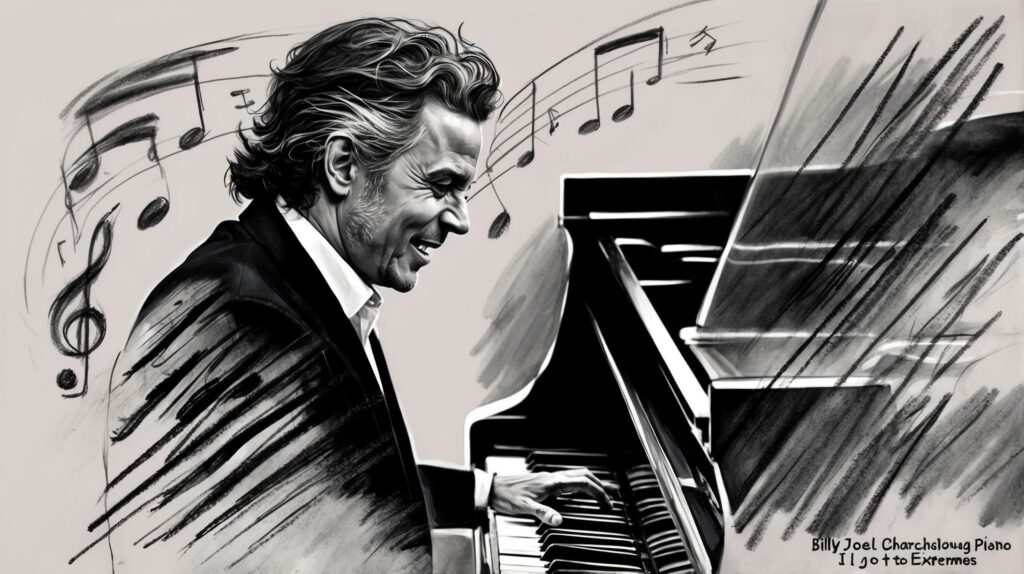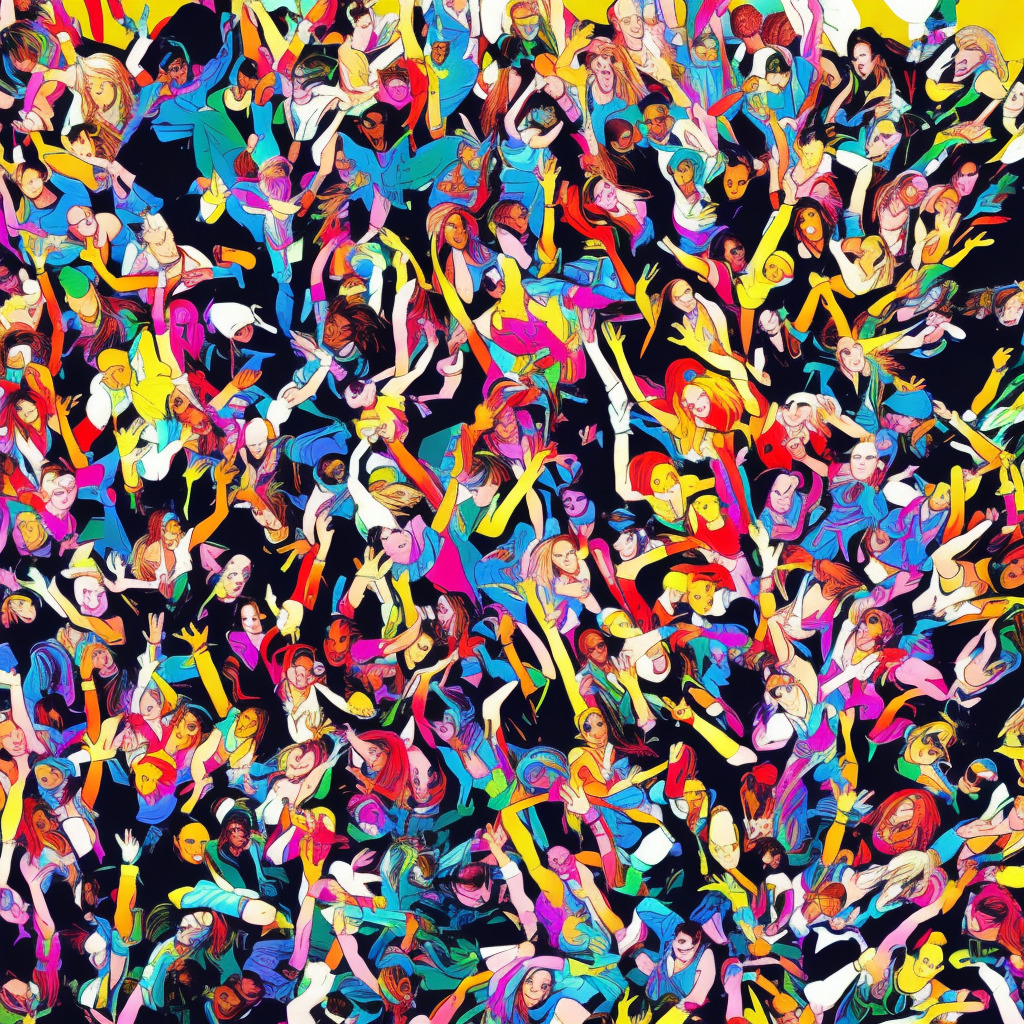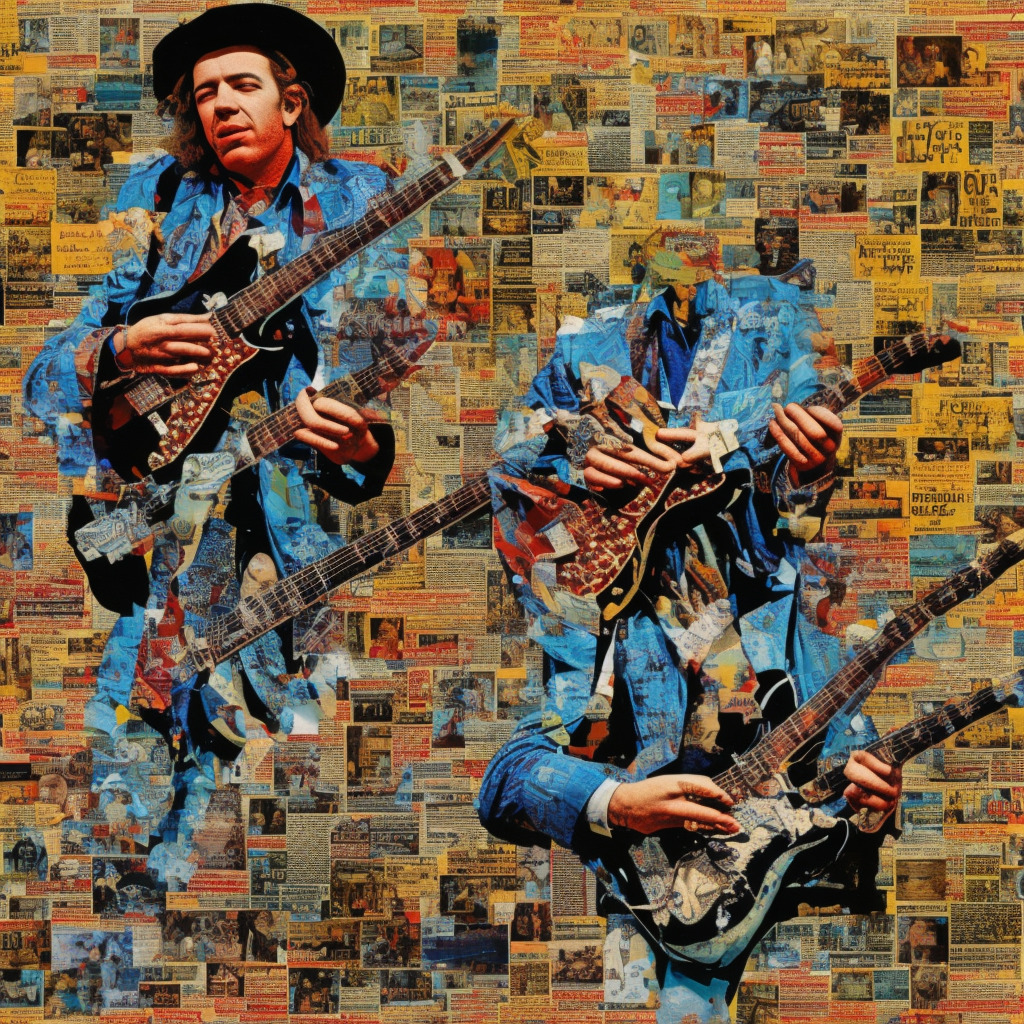Billy Joel: The Pianist Behind ‘I Go to Extremes’
Explore the musical journey of Billy Joel, the legendary ‘Piano Man,’ focusing on his evolution around the time of ‘I Go to Extremes.’ Discover how his unique artistry cemented his status in the music world.
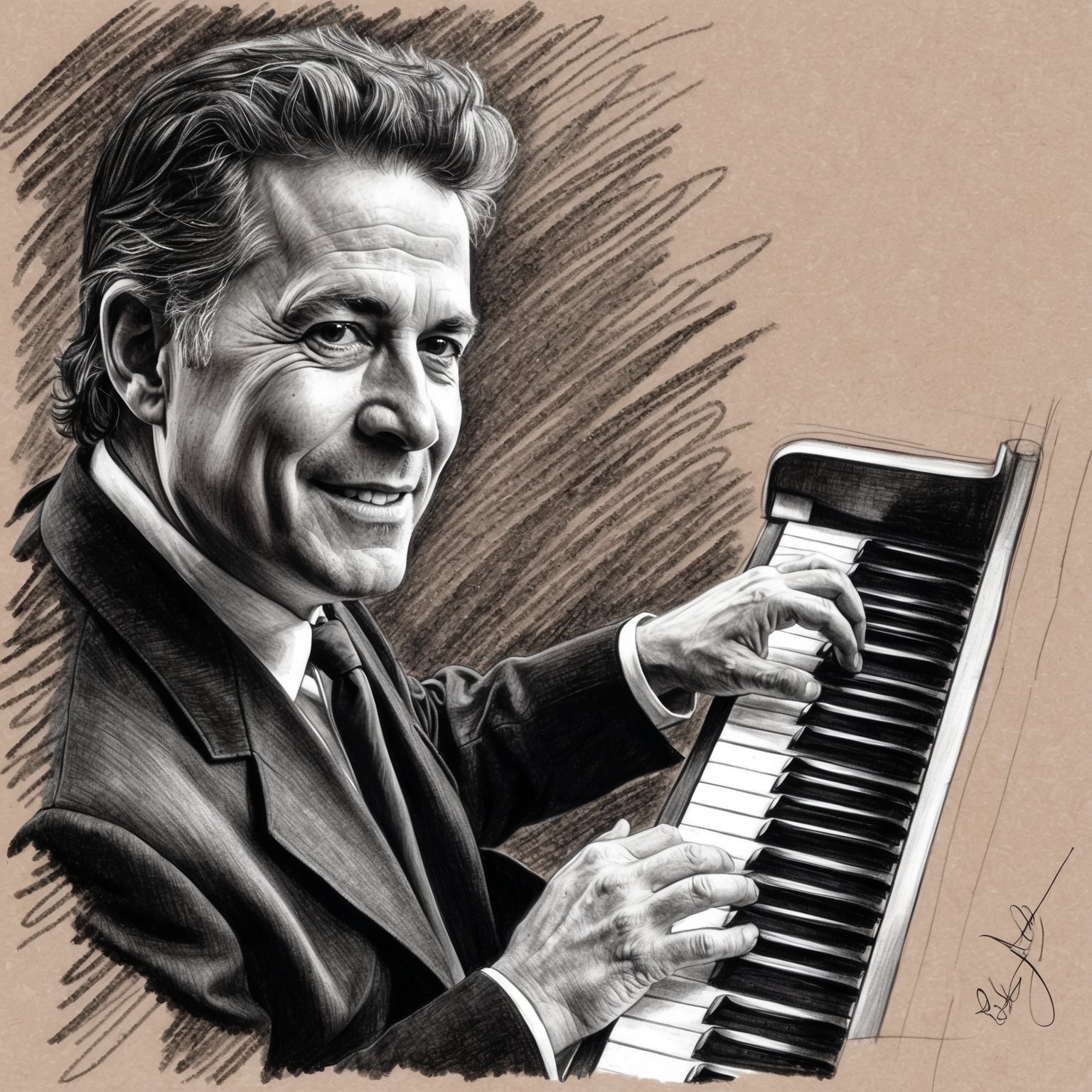
Billy Joel, the celebrated ‘Piano Man,’ embarked on a diverse and impactful musical journey that spanned several decades, and ‘I Go to Extremes’ stands out as a vibrant testament to his artistic evolution. Coming at a time when Joel was firmly established as a songwriter known for his insightful lyrics and captivating melodies, this track captures his signature emotional intensity and brilliance. It reflects the dual nature of human existence, blending introspective lyrics with a dynamic melody.
Born in The Bronx, New York, in 1949, Billy Joel’s foray into music began at a very young age. As a classically trained pianist, his early days were marked by a deep-seated passion for rock and roll. By the late 1960s, Joel was exploring various iterations of music, ultimately achieving his breakthrough with the critically acclaimed album, ‘Piano Man,’ in 1973. This marked the beginning of a storied career punctuated by numerous hit records, including ‘I Go to Extremes,’ contributing to his legacy as one of America’s quintessential singer-songwriters.
The song emerged during a pivotal era for Joel, encapsulated in his 1989 album ‘Storm Front.’ At this juncture, Joel’s mastery in collaborating with accomplished musicians and producers such as Mick Jones, the album’s producer, came to the fore. The creative process around ‘Storm Front’ allowed Joel to experiment while maintaining his authenticity. The American music scene at the time was rife with transformation, and Joel successfully navigated this changing landscape, producing works that resonated deeply with his audience.
The Creative Genius Behind the Piano: Billy Joel’s Compositional Brilliance
Explore Billy Joel’s role as the composer of “I Go to Extremes,” highlighting his background, musical influences, and the elements that define his compositional style.

Billy Joel, known as the Piano Man, is not only an accomplished performer but also the brilliant composer behind his hit song “I Go to Extremes.” With a career spanning several decades, Joel’s compositional prowess is rooted in a diverse background that reflects his rich musical experiences. Born in the Bronx, New York, Joel grew up in a home filled with music, thanks to his pianist father. His formal training in classical piano laid the foundation for his sophisticated compositions, which often blend rock, jazz, and classical elements.
Exploring his musical style, Joel’s work is characterized by its storytelling quality and emotional depth. His compositions are known for their catchy melodies and intricate arrangements. Joel drew inspiration from various musical influences, including classical composers like Beethoven and Chopin, as well as contemporary rock and jazz musicians. This eclectic blend of styles is evident in “I Go to Extremes,” which features a driving piano line and dynamic shifts that mirror the intensity of the song’s lyrics.
Throughout his career, Joel has collaborated with numerous talented musicians and producers. His partnership with producer Phil Ramone was particularly significant, with Ramone’s production enhancing Joel’s compositional strengths. In “I Go to Extremes,” Joel’s role as both the lyricist and composer allowed him to craft a song where the music perfectly complements the emotional narrative. The energetic phrasing and tempo changes are signature touches that highlight Joel’s unique ability to blend lyrics and melody seamlessly.
Acclaim and Interpretations: ‘I Go to Extremes’
I Go to Extremes’ by Billy Joel has made its mark more through cultural resonance than formal awards, though it finds continuous appreciation through performances, minimal covers, and its thematic presence in media.

Billy Joel’s ‘I Go to Extremes,’ a track from his 1989 album Storm Front, has gathered appreciation not just from fans but also within the broader music community. While the song itself didn’t boast a slew of awards like some of his other hits, it certainly carved out a niche in pop culture and music circles that celebrates Joel’s dynamic musical expression.
Even if ‘I Go to Extremes’ doesn’t showcase a trophy case filled with awards, its success is reflected in how it has continued to resonate with audiences. Its compelling blend of introspection and high-energy performance has made it a staple amongst Billy Joel’s live sets. Allowing listeners to bond over the shared human experiences of highs and lows, the song has earned a spot in the hearts of many, emphasizing its importance, even without formal accolades.
The song has also been embraced by various artists aiming to reinterpret its powerful themes. Although there aren’t a plethora of notable covers, ‘I Go to Extremes’ finds space on platforms celebrated by cover bands and individual musicians who wish to capture the energetic spirit of this piano-driven track. Each interpretation adds another layer to the ongoing appreciation of Billy Joel’s work.
Lending itself to the audio landscapes of TV and movies, ‘I Go to Extremes’ often appears in settings requiring emotional depth and narrative vibrancy. This ensures that Joel’s message continues to reach diverse audiences, enhancing its longevity and continued relevance in popular media.
Billy Joel’s “I Go to Extremes”: Making Its Mark on the Charts
Discover how Billy Joel’s “I Go to Extremes” conquered the charts and cemented its legacy as a beloved classic.

Billy Joel’s “I Go to Extremes,” from his 1989 album “Storm Front,” is a testament to the artist’s continued evolution and market resonance. Released in 1990, the song quickly ascended the charts, securing a prominent spot in Joel’s extensive catalog of hits. Initially, “I Go to Extremes” made its debut on the US Billboard Hot 100, swiftly proving its mass appeal by peaking at an impressive number six, helping to cement its place as a significant entry in Joel’s musical journey.
Compared to other chart-toppers of the year, “I Go to Extremes” held its own amidst fierce competition, illustrating its broader appeal. For Billy Joel, already a household name by this point, the song wasn’t a breakthrough hit but rather a successful follow-up to his established track record, continuing the momentum built by earlier successes like “Uptown Girl” and “We Didn’t Start the Fire.” Its performance highlighted Joel’s knack for touching themes that resonate with his audience, contributing to the song’s steady sale figures and radio play.
Promotion for “I Go to Extremes” played a pivotal role in its chart success. Columbia Records leveraged Joel’s existing fame, strategically releasing it as the second single from “Storm Front,” following the widely acclaimed “We Didn’t Start the Fire.” The campaign included a mixture of radio airplay, live performances, and music video rotations, ensuring that the song was omnipresent in the media circuit. Critics appreciated the song for its energetic tempo and introspective lyrics, marking it as another feather in Joel’s cap. Ultimately, it not only bolstered Joel’s career but also found a lasting place in popular culture, enjoyed by fans old and new alike through both traditional media and modern streaming platforms.
Dissecting the Visual Journey of ‘I Go to Extremes’
Explore how the absence of an official music video for ‘I Go to Extremes’ by Billy Joel opened the door for creative fan content and live performance visualizations, enriching the song’s engagement with its audience.

Billy Joel, celebrated for his storytelling abilities, often leaves a lasting impact through his musical narratives. For ‘I Go to Extremes,’ a defining track from his 1989 album ‘Storm Front,’ Joel focused more on his live performance rather than a traditional music video. Although the song doesn’t have an official music video, its exposure through live performances and various fan-made content online contributes significantly to the song’s longevity and popularity.
The absence of an official video has allowed fans to take creative liberties, reflecting their interpretations of the song’s energy and message in user-generated content. These videos, often drawing footage from Joel’s electric live concerts, spotlight his passionate delivery and the fervent audience responses. Such enthusiastic participation adds a layer of community engagement with the song, echoing its underlying themes of intensity and extremes.
Officially, Billy Joel performed ‘I Go to Extremes’ at numerous live shows, and these renditions were often broadcast or shared, contributing to the song’s acclaim. His live versions showcase spontaneous, eclectic energy, which many argue might have surpassed any pre-scripted video in capturing the song’s exuberance. Critics and fans alike have recognized these live performances as definitive interpretations, reinforcing the song’s emotional and musical dynamism.
Anatomy of Intensity: Dissecting the Musical Structure of ‘I Go to Extremes’
Unpacking the technical intricacies of Billy Joel’s ‘I Go to Extremes’ reveals a masterful blend of energetic tempo, dynamic melody, and engaging instrumentation, showcasing a pivotal point in the artist’s musical evolution.

Billy Joel’s ‘I Go to Extremes’ is a testament to the artistry and technical prowess that defines the singer-songwriter’s expansive catalog. The song is written in the key of C major, demonstrating a vibrant and emotionally engaging tonality that complements its themes of fluctuating emotions and passion. The chord structure follows a consistent pattern that supports the narrative arc of the lyrics, providing a seamless blend of intensity and introspection.
The tempo of ‘I Go to Extremes,’ brisk and invigorating at approximately 130 BPM (beats per minute), is pivotal in creating the song’s dynamic energy. This tempo choice aligns perfectly with the thematic elements of restlessness and fervor that are prevalent throughout the lyrics. The melody is straightforward yet compelling, characterized by its ascending and descending sequences that mirror the lyrical content’s emotional highs and lows.
Instrumentation is a crucial component of the song’s unique sound. Joel’s use of piano is particularly prominent, driving the song’s harmonic framework with both vigor and finesse. Accompanying the piano are elements of rock instrumentation, including electric guitars and a steady drumbeat, which collectively contribute to the song’s robust and spirited soundscape. In the context of Billy Joel’s discography, ‘I Go to Extremes’ stands out for its dynamic structure, capturing a blend of pop and rock elements. This song signifies a pivotal point in Joel’s musical journey, showcasing a synthesis of his signature ballad style with an invigorating rock influence, a trend conceptualized in prior albums but fully realized in his 1989 album ‘Storm Front.’ This song reflects Joel’s evolution, embodying a matured thematic direction and nuanced musical complexity compared to his earlier works.
Diving into the Emotional Depths of “I Go to Extremes”
Analyze the lyrical depth of Billy Joel’s “I Go to Extremes”, exploring themes of emotional duality and self-reflection through vivid imagery and relatable storytelling.
Right at this moment, I’m totally cool
Clear as a crystal, sharp as a knife
I feel like I’m in the prime of my life
Sometimes it feels like I’m going too fast
I don’t know how long this feeling will last
Maybe it’s only tonight
Darling, I don’t know why
I go to extremes
Too high or too low
There ain’t no in-betweens
And if I stand or I fall
It’s all or nothing at all
Darling, I don’t know why
I go to extremes
Sometimes I’m tired, sometimes I’m shot
Sometimes I don’t know how much more I got
Maybe I’m headed over the hill
Maybe I set myself up for the kill
…
******* This Lyrics is NOT for Commercial use *******
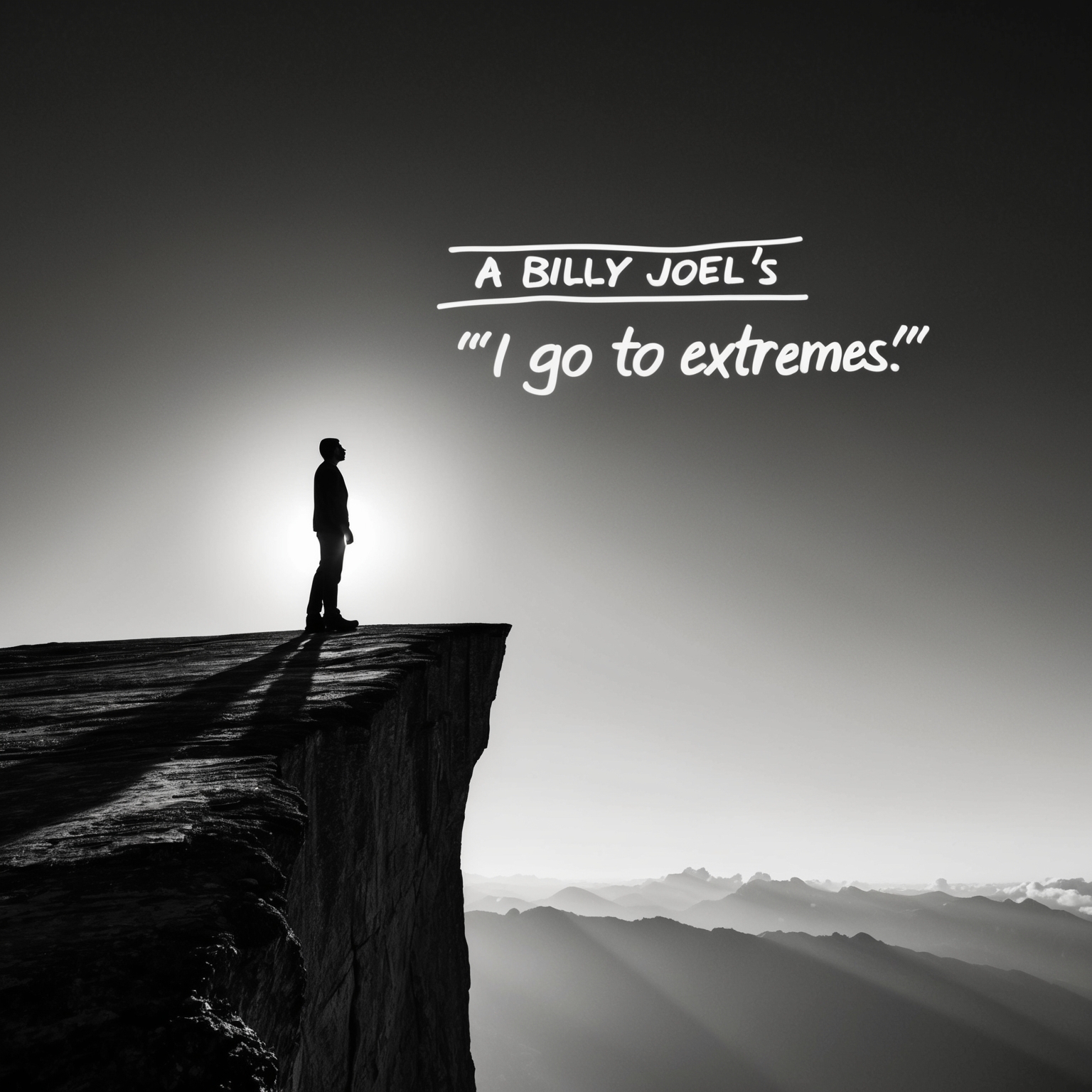
Billy Joel’s “I Go to Extremes” is a vivid portrayal of the emotional highs and lows that many people experience. The song’s lyrics explore themes of uncertainty, self-awareness, and a relentless zest for life, making it a relatable anthem for anyone grappling with similar feelings. Joel’s songwriting delves into the duality of human emotion, capturing moments of triumph juxtaposed against the impending threat of loss or failure.
In terms of lyrical themes, “I Go to Extremes” presents a narrative that is deeply personal. It embraces the complexity of emotions, depicting how one can oscillate between being on top of the world and feeling utterly defeated. This duality resonates powerfully with the audience, as it taps into the innate human experience of unpredictability in one’s emotional landscape. The repeated line, “Darling, I don’t know why I go to extremes,” becomes a confessional refrain, suggesting a level of introspection and vulnerability that listeners can connect with.
The narrative style of the song is first-person, offering a direct insight into the protagonist’s mindset. This perspective allows Joel to communicate his message with an intimate tone, drawing the listener into his world. The lyrical content is replete with vivid imagery, such as being “clear as a crystal” or “sharp as a knife,” which evokes a sense of immediacy and clarity in the moments of emotional peaks. At the same time, it acknowledges the blurry ambiguity and fatigue that accompany the inevitable emotional valleys.
Literary devices abound in the lyrics, from metaphors like “heading over the hill” and “setting myself up for the kill,” to the rhythmic use of repetition that emphasizes the song’s central theme of extremes. The simplicity of these literary elements imbues the song with a rhythmic quality that enhances its emotional impact. The balance between simple language and evocative descriptors ensures the lyrics are accessible while still engaging the listener’s imagination.
Comparatively, “I Go to Extremes” shares thematic threads with other tracks by Billy Joel, such as fluctuating emotions seen in “Pressure” and the introspective depth of “Vienna.” These songs frequently explore human vulnerability and uncertainty, highlighting Joel’s penchant for writing about personal struggles in a way that resonates universally.
Billy Joel’s I Go to Extremes wasn’t just a hit—it was a battle cry! Inspired by his icy-diving mishap, it captures life’s thrilling ups and downs! 🎹🎶 https://bit.ly/3DoH1ve
Click to Tweet

